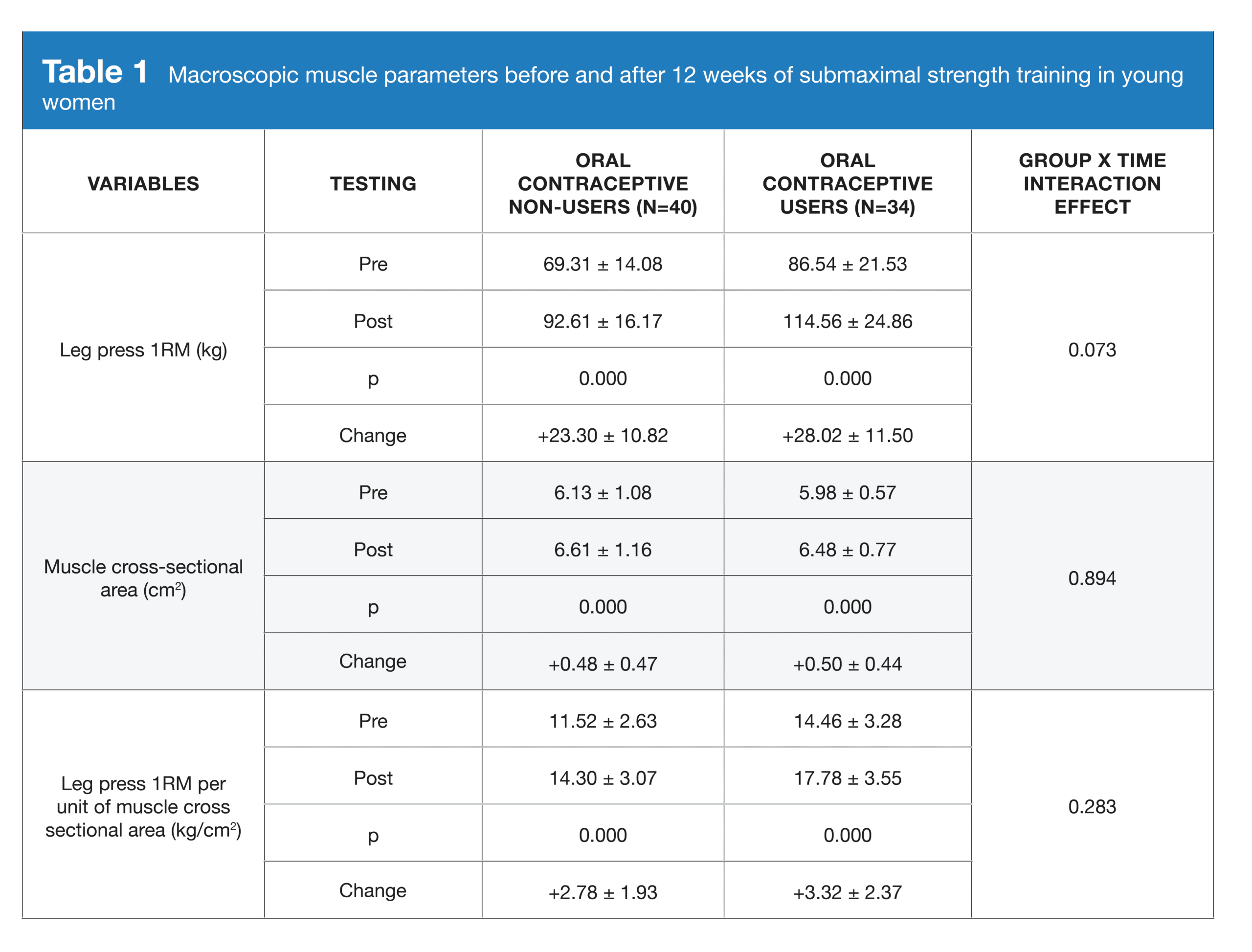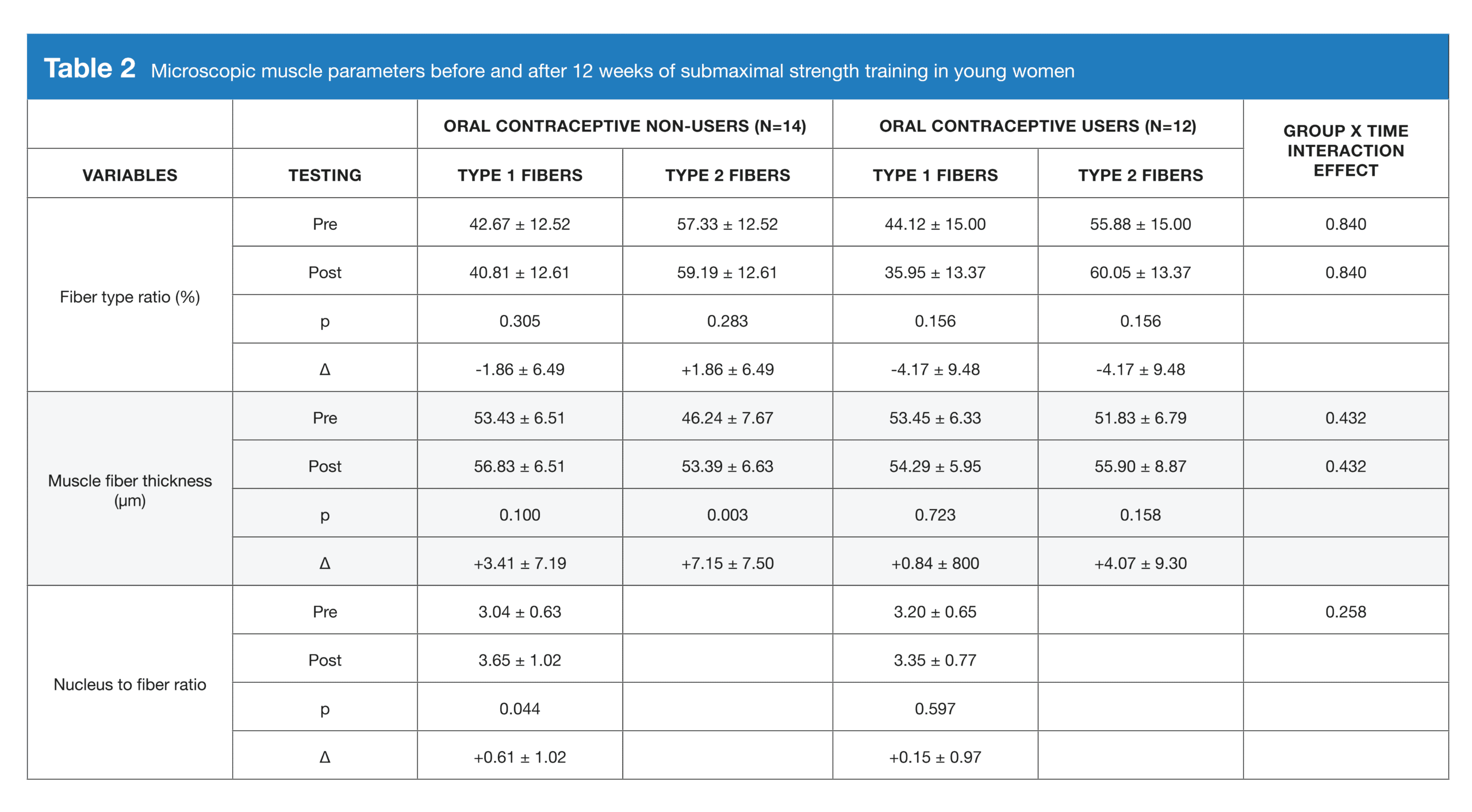In May 2022, I published a research review article investigating the impact of oral contraceptives on strength and hypertrophy outcomes.
In the interpretation section, I provided a thorough review of the state of the literature on the topic. If you’re interested in doing a deep dive, you should check out that article. But, to briefly summarize the state of the literature at that time: second- and third-generation combined oral contraceptives don’t seem to meaningfully impact either strength gains or hypertrophy outcomes.
Since then, I’m only aware of two new papers on the topic. The first was a paper by Reichman and Lee (3), which actually wasn’t entirely new. In my prior review of the literature, I included a conference abstract by Lee et al from 2009, which hadn’t been formally published in a peer-reviewed journal (4). The recent Reichman paper is the formal, published document based on the same data Lee and colleagues presented in their conference abstract; as such, the findings in the Reichman paper findings are the same as those reported in the Lee abstract. I’m glad the study was finally published, but it doesn’t provide net new information for readers.
The second new study on the topic is the subject of this Research Spotlight (1). Fair warning: this will be relatively brief. It just adds a few more data points to the conversation, but it doesn’t change the overall weight of the evidence on the topic. If anything, it just further solidifies the takeaways of my prior article on oral contraceptives.
74 subjects completed this study by Sung and colleagues, including 40 subjects who didn’t use oral contraceptives (and who hadn’t used oral contraceptives within the past year), and 34 who were presently using second-generation oral contraceptives (and who had been using oral contraceptives for at least one year). Subjects were not resistance-trained, but were generally active and healthy.
Subjects in both groups completed 12 weeks of resistance training. The subjects performed three leg press sessions per week, following a simple linear progression. Each session consisted of three sets of leg press to failure, with two minutes of rest between sets. When a subject completed more than 12 reps in a set, their training loads increased by 10%. Subjects also completed one recovery session of bodyweight squats per week, consisting of three sets of 15-20 reps, with 3-5 minutes of rest between sets.
Before and after the 12-week training program, researchers assessed the subjects’ strength (via an isometric leg press test at 90° of knee flexion) and quadriceps size (via ultrasound measurements of rectus femoris, vastus intermedius, and vastus lateralis cross-sectional area). They also took vastus lateralis biopsies to assess changes in muscle fiber cross-sectional and myonuclear density.
No outcomes significantly differed between groups. The oral contraceptive group tended to gain a bit more strength (+28.02kg vs. +23.30kg), but the difference wasn’t statistically significant (p = 0.073). No other outcome was even within spitting distance of statistical significance (all p > 0.25). You can see the results in Tables 1 and 2.


Overall, this study reinforces the overall theme of my previous article on the topic: oral contraceptives don’t seem to meaningfully affect strength or hypertrophy outcomes. However, this study is actually a pretty important addition to the literature. It’s the biggest study on the topic (in terms of sample size), and the researchers did a really good job of controlling for menstrual cycle phase, just to ensure that performance fluctuations throughout the menstrual cycle wouldn’t add noise to their results. The researchers monitored the subjects for two full cycles before the start of the training intervention to ensure that all subjects had a consistent cycle, and to ensure that strength testing took place at the same point in the menstrual cycle for all subjects. New studies confirming prior findings are always nice to see, but large, methodologically rigorous studies confirming prior findings are even nicer to see.
Note: This article was published in partnership with MASS Research Review. Full versions of Research Spotlight breakdowns are originally published in MASS Research Review. Subscribe to MASS to get a monthly publication with breakdowns of recent exercise and nutrition studies.
References
- Sung ES, Han A, Hinrichs T, Vorgerd M, Platen P. Effects of oral contraceptive use on muscle strength, muscle thickness, and fiber size and composition in young women undergoing 12 weeks of strength training: a cohort study. BMC Womens Health. 2022 May 10;22(1):150. doi: 10.1186/s12905-022-01740-y. PMID: 35538569; PMCID: PMC9092708.
- Oxfeldt M, Dalgaard LB, Jørgensen EB, Johansen FT, Dalgaard EB, Ørtenblad N, Hansen M. Molecular markers of skeletal muscle hypertrophy following 10 wk of resistance training in oral contraceptive users and nonusers. J Appl Physiol (1985). 2020 Dec 1;129(6):1355-1364. doi: 10.1152/japplphysiol.00562.2020. Epub 2020 Oct 15. PMID: 33054662.
- Riechman SE, Lee CW. Oral Contraceptive Use Impairs Muscle Gains in Young Women. J Strength Cond Res. 2021 May 14. doi: 10.1519/JSC.0000000000004059. Epub ahead of print. PMID: 33993156.
- Lee CW, Newman MA, Riechman SE. Oral Contraceptive Use Impairs Muscle Gains in Young Women. FASEB. 2009 Apr;23:51. doi: 10.1096/fasebj.23.1_supplement.955.25.




